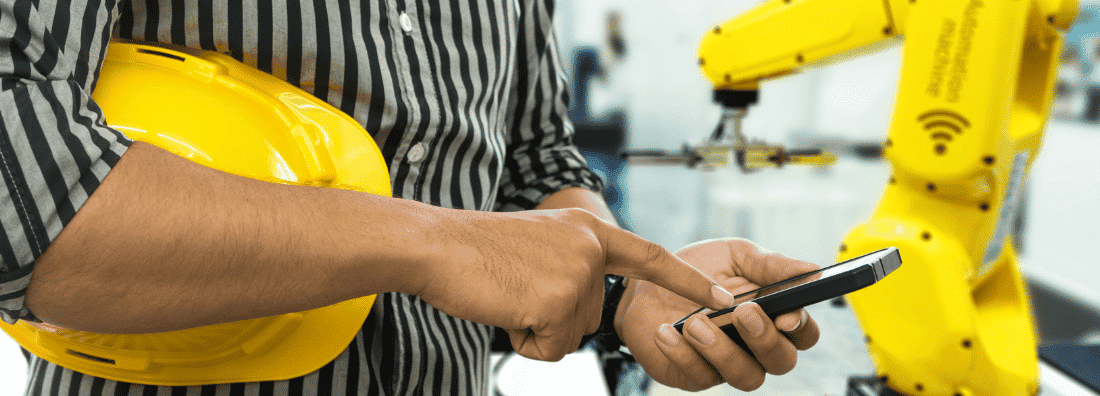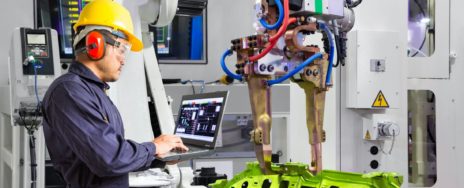Industry 4.0, or the industrial internet of things (IIoT), is taking the manufacturing world by storm. Machines, systems, and devices are interconnected and communicating with one another for a 360-degree view of the entire manufacturing process, from production to distribution.
The factory of the future is here, and it’s creating a next generation workforce that is engaged on a whole new level.
By 2025 there will be over 75 billion devices communicating with one another. By one estimate, IIoT will make manufacturing seven times more productive. But this factory of the future will still depend on production workers to supervise operations, monitor communication, analyze results, and make the data-driven decisions that only humans can.
Below, we break down how the manufacturing workforce will evolve in the Industry 4.0 era.
The New Face of the Industry 4.0 Workforce
Manufacturing has a declining workforce and has had trouble competing for new talent. But Industry 4.0 is rebranding the industry. Technology is creating more job opportunities and attracting more job seekers, resulting in a revitalized, more sustainable industry. Here are two ways the IIoT will spur workforce growth in manufacturing.
- Next Generation Workers. With an aging workforce comprised mainly of baby boomers and Gen X, the manufacturing industry is losing millions of employees to retirement. To stay competitive, companies need to leverage IIoT as a recruiting tool and target the 56 million millennial generation, a tech-fluent generation who will be attracted to the capabilities of smart factories.
- New Roles Created by IIoT. As AI takes over more of the routine tasks, new career opportunities will emerge. Smart factories will need more supervisors, data analysts, software engineers, and IT support roles. As factories become more efficient and increase production output, there will be a greater need for customer-facing jobs such as sales and marketing.
“By automating many of the physical and redundant processes, you can allocate more time, resources, and brainpower to sales strategy and customer satisfaction.”– Cristian Grossmann, CEO and Co-Founder of Beekeeper
IIoT Creates More Engaged Production Workers
As manufacturing companies upgrade to the industrial IoT, production workers are best positioned to manage communication by their proximity to the systems, and their hands-on experience in the process. All they need is an IoT-compatible employee app to receive data and track operations from anywhere on their mobile devices. IIoT enables previously independent data silos to share information creating a fully-interactive information ecosystem for production workers who become more active collaborators in the operation. With the ability to receive and manage data, production workers are valuable communications partners in the IIoT environment, creating an inclusive culture that increases engagement.
How IIoT Creates a Safer Environment for Production Workers
The benefits of the industrial IoT that get the most attention are production, efficiency, and cost savings. However, manufacturing has one of the highest accident rates of any industry, with most incidents involving equipment failure or use error.
The IIoT is creating safer manufacturing companies with automated condition monitoring. Through sound frequency and vibrations, sensors track and report real-time equipment function.
Production workers can receive this data and check on the health of a machine through the employee app on their mobile device. This catches signs of failure before it happens, reducing the risk of equipment-caused accidents to build a safer work environment.
Transitioning to a smart factory is an investment, but one that will revitalize production, and create a more efficient, safer environment with a revitalized and engaged workforce. This ultimately gives companies a competitive advantage. Traditional manufacturing plants will begin to lose out, and lose talent, to smart factories––making IoT well-worth the investment.





